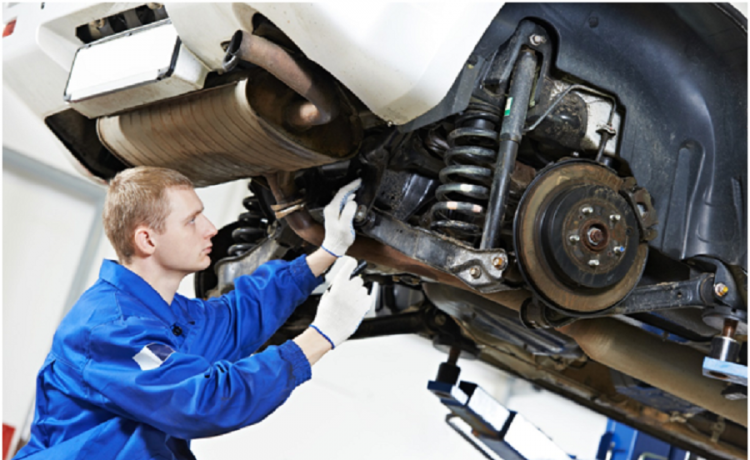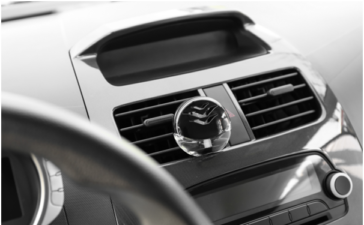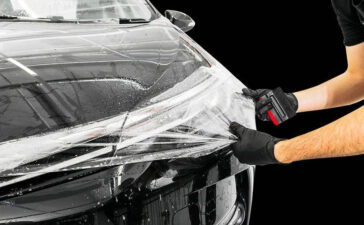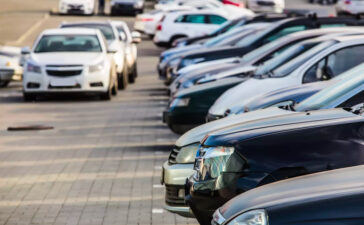Have you ever wondered what allows a vehicle to hit a pothole at full speed without as much as a jar felt inside the cabin? Or how you’re able to maneuver sharp turns without rolling your vehicle right into the ditch?
Most people like to talk about horsepower and sound systems when it comes to car talk. However, without your vehicle’s suspension system, everything else would just be dead weight—literally.
Let’s take a look a look at 5 common suspension system parts and function to get a better idea of what crucial role they play in your vehicle’s makeup.
1) Springs
Can you remember as a kid getting pulled around in those little red wagons? They were a lot of fun but you felt every little bump on the bum. That’s because there weren’t any springs to absorb the shock.
The springs of a vehicle absorb bumps in the road by allowing the wheels to move up without jolting the entire vehicle. Not only do springs compensate for bumps in the road, but they also maintain the desired height of the vehicle.
Springs are an important part of a vehicle as they provide a comfortable ride, increased handling, and load-bearing capability. The most common types of springs in a suspension package are leaf springs, coil springs, and torsion bars.
Leaf Springs
Leaf springs were most commonly used in the automotive industry up until around the 1970s. Yet, today they are still widely used all around the world.
In its basic form, a leaf spring suspension is made up of layers of long rectangular spring steel sandwiched one on top of another. The leaves form into an elliptical shape that flattens when under load, and springs back when the load is no more.
They are mounted to the axle of the vehicle with large U-bolts and held together with metal clips. The biggest advantage of leaf springs is they spread heavy loads more widely over the chassis, thus making them well suited for heavier vehicles like trucks, SUVs, and vans.
Coil Springs
Coil springs are widely used in both front and back suspension systems. Because they do not take up a lot of space within a vehicle, they are used in many different types of suspension designs.
The springs are mounted on either the upper or lower control arm depending on which ball joint is carrying the load. They’re commonly used with Macpherson strut, solid-axle, independently sprung rear axle, trailing arms, and SLA suspension systems. Made of spring steel, coil springs can be firm, soft, or have a variable spring rate depending on load.
Torsion Bars
Used for many years on vehicles designed with SLA suspension systems, a torsion bar is a round bar that twists when the suspension system is loaded. Torsion bars take up minimal space and can be adjusted to the desired height.
With torsion bars, one end of the bar connects to the frame while the other end connects to the wheel arm and sits in a bearing. The wheel arm is connected to the wheel, so when the tire passes over irregularities in the road, the torsion bar twists absorbing the shock.
2) Shock Absorbers
Shock absorbers play a crucial part in a vehicle’s suspension system and work alongside the springs. In their basic form, they’re a hydraulic component that helps to manage the impact and rebound movement of the vehicle’s suspension system.
Without shock absorbers, your springs and suspension would take quite a beating from the relentlessness of bumpy roads. They help with the rebound from your springs and help keep your tires on the road. Keeping your tires on the road is important to maintain control of your vehicle and being able to brake effectively.
3) Wheels/Tires
You may not think it, but your wheels and tires are a major part of your vehicle’s suspension system. Your tires are what make contact with the unforgiving road.
They absorb small bumps, create traction for accelerating, and provide friction for braking and cornering. If you’ve ever ridden on city streets in a vehicle with knobby offroad tires, then you understand the importance tires play in your suspension system’s ability to provide a smooth ride.
4) Rods/Linkages
There are many different rods and linkages within a suspension system. Most rods and linkages help with maintaining stability and control of your vehicle. Sway bar, strut rod, tie rod and panhard rod are a few common ones.
Each component has its own important purpose. A tie rod, for example, connects the steering gear with the wheels of a vehicle and helps with steering as well as keeping wheels aligned. Sway bars help keep vehicles from leaning too hard one way during sharp turns.
5) Control Arms and Joints
Vehicles typically use one or two control arms per wheel in the front and rear suspension. Control arms connect the wheel hub and steering knuckle to the frame of the vehicle. They allow the wheels of your vehicle to move upward and downward and prevent them from moving forward or rearward.
When components within a suspension system need to be mounted together, bushings are used to minimize vibration. You can think of bushings like cartilage used in the joints of a human body. Without the cartilage, bones would rub together causing spurs and all sorts of painful problems.
The same principle can be applied to your vehicle. Without bushings, metal parts would rub against each other, wearing on each other, and causing unpleasant noises and vibrations. Bushings are widely used in shock absorbers mounts, control arms, stabilizer bars, stabilizer links, engine mounts, transmission mounts, and steering components.
Ball joints are like pivot joints in the body—think of the neck and head. They provide a restricted range of movement in all directions and are a pivot between the suspension and the wheels.
Suspension System Parts and Function
Your vehicle’s suspension is responsible for giving you a safe and comfortable ride while maintaining optimal height and control. Learning your vehicle’s suspension system parts and function will help you in maintaining your vehicle’s suspension. Because after all, without it a solid working suspension, you might as well just take the bus to where you need to go.
If you’ve found this article interesting, please check out our other educational bits in our blog section.









